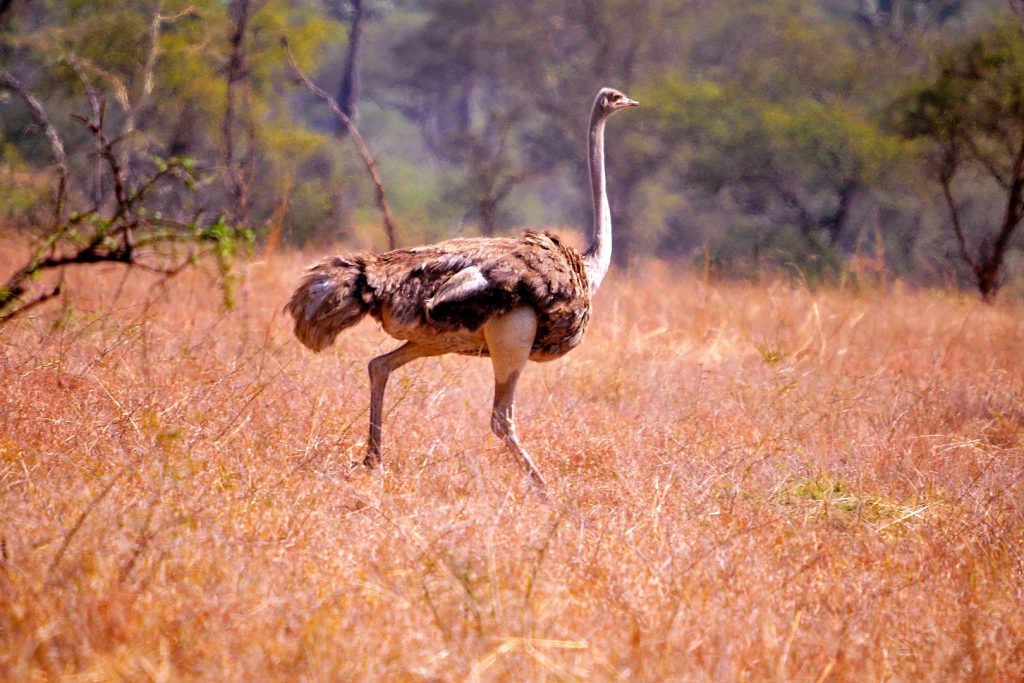Most birds of Kidepo Valley National Park are the rarest, being sought after. The park is a true wilderness destination for the adventurous with jagged mountains, often lost in rain clouds, enclosing the park. It has excellent wildlife viewing during the Dry season, featuring several species not encountered anywhere else in the country. The large, open plains make Kidepo feel more like parks in neighboring countries than in Uganda. Kidepo is Uganda’s most isolated national park, but the few who make the long journey north through the wild frontier region of Karamoja would agree that it is also the most magnificent, for Kidepo ranks among Africa’s finest wildernesses.

A view of an Ostrich inside Kidepo Valley National Park
Kidepo Valley National Park boasts a bird list of over 475 species, a total second only to Queen Elizabeth National Park. Amongst the host of dry, eastern “specials” not found in any other Ugandan national park are some of East Africa’s rarest and most sought after birds such as Black-breasted Barbet and Karamoja Apallis.
Kidepo Valley National Park has 16 Sudan and Guinea Savanna, and 4 Guinea Congo forest Biome species, 3 of Uganda’s 32 Somali-Masai biome species. There are also 21 Afro-tropical highland species (recorded mainly from highlands of Lonyili, Morungole, Zulia and Lomej with their characteristic mosaic of forest, savanna and thicket)
Highlighted ones include the ostrich, kori bustard, secretary bird, red throated bee eaters and the Abyssinian ground hornbill. Kidepo is also notable for its S8 species of birds of prey including the Verreaux eagle, Egyptian vulture and the pygmy falcon.
Other species to find while searching for birds of Kidepo Valley include; Golden Pipit, Ring-necked Spurfowl, Taita Fiscal, Rufous Chatterer, Fox’s Cisticola, Yellow and red spotted Barbet, Fox’s Weaver, Lesser Kestrel, Pallid Harrier, Black-winged Pranticole, White-crested, Hartlaub’s Turaccos, Dusky-turtle Dove, White-bellied Go-Away bird, Abyssinian Scimitar bill, Karamoja Apalis, White-bellied Tit, Mouse-coloured Penduline Tit, Northern White-crowned and Yellow-billed Shrikes, Slate-coloured Boubou, Fan-tailed Raven, Superb Starling, Red billed Oxpecker, Eastern Violet backed, Pygmy and Beautiful Sunbirds, Rufous and Chestnut Sparrow, Yellow-spotted Petronia, Jackson’s and African-pied Hornbills, Yellow-billed Shrike, Emin’s Shrike, Piapiac, Red-winged Lark, Black-rumped Waxbillmay be seen in the rank grass along the normally dry stream bed adjacent to the camp or along the track to Apoka lodge.
